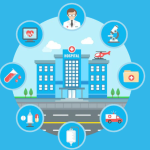
How to Increase Patient Flow in Clinic?
Running a successful clinic involves more than just offering excellent medical care. Effectively managing to increase patient flow in the clinic is also important. Patient flow, or how patients move through a healthcare facility, immediately increases clinic revenues, patient happiness, and operational performance.
In this article, we’ll explore practical ways to increase patient flow. But before diving into the strategies, let us first understand what patient flow is.
What is Patient flow?
Patient flow refers to the advancement of patients through various stages of their visit to the clinic, from the moment they schedule an appointment to the time they leave the clinic after receiving care. Decreased wait times, maximum resource utilization, and increased satisfaction among patients are all guaranteed by organized patient flow.
Importance of Efficient Patient Flow
- Increased Patient Satisfaction: Patient satisfaction increases when patients have shorter periods of waiting and an effortless procedure.
- Higher Revenue: More patients could be served when time and resources are used efficiently, which increases clinic revenue.
- Improved Staff Productivity: Streamlined processes reduce the workload and stress on staff, leading to better performance.
- Enhanced Quality of Care: Healthcare professionals can focus more on patient care and less on administrative work when there is an organized patient flow.
Strategies to Increase Patient Flow
Here are several effective strategies you can implement to increase patient flow in the clinic:
Efficient Scheduling
1. Online Appointment Booking
Provide patients with online booking options so they can schedule appointments whenever it’s most convenient for them. This increases procedure efficiency and reduces the load on the front desk employees.
2. Automated Reminders
Reduce the number of no-shows by using email or SMS-based automated appointment reminders. These reminders increase patient flow in the clinic by ensuring that appointments are kept, thereby maintaining a regular flow of patients.
3. Flexible Scheduling
To accommodate more patients, consider offering flexible scheduling options like weekend appointments or additional time. This can help in managing peak times and spreading patient visits throughout the day.
Leverage Technology
Incorporating technology into your clinic’s operations can greatly increase patient flow. Here’s how:
1. Electronic Health Records (EHR)
Use EHR systems to streamline patient information management. EHRs allow quick access to patient records, reducing the time spent on administrative tasks and improving coordination among healthcare providers.
2. Telemedicine
Provide telemedicine services for consultations in which a physical examination is not necessary. This meets the needs of patients who would rather have consultations virtually while also minimizing the need for appointments in person.
3. Patient Portals
Create patient portals where patients can access their medical records, lab results, and appointment schedules. This reduces the need for in-person visits and phone calls, freeing up staff time for other tasks.
Improve Clinic Layout
The physical layout of your clinic can seriously impact patient flow. Consider the following:
1. Optimize Waiting Areas
Make sure waiting rooms are spacious and have a comfortable environment for patients, as this setup can increase patient flow by ensuring enough seating and organized space, thus avoiding overcrowding in the clinic.
2. Streamline Check-in and Check-out Processes
Implement self-check-in machines to reduce wait times at the front desk. Make sure the checkout process moves quickly and smoothly, potentially with electronic payment options to minimize delays.
3. Efficient Exam Room Allocation
Make sure the examination rooms are divided properly. Use a way to track room availability and patient occupancy to avoid delays.
Streamline Administrative Processes
Administrative inefficiencies can be a major bottleneck in patient flow. Here’s how to address them:
1. Pre-visit paperwork
Allow patients to finish the paperwork they need online in advance of their appointment. This reduces the time spent on administrative tasks during check-in.
2. Efficient Billing Systems
Reduce the amount of time spent processing payments by implementing smart billing systems. This can include automated billing reminders and online payment options.
3. Centralized Communication
Staff should communicate regularly to stay up-to-date on patient scheduling, cancellations, and changes in real time. This helps in increasing patient flow by using internal communication tools and holding regular interactions.
Effective Staff Training
Staff play a crucial role in managing patient flow. Proper training can ensure that they are efficient and effective in their roles.
1. Customer Service Training
Train staff in customer service skills to improve patient interactions and ensure a positive experience. This helps to increase patient flow as satisfied patients are more likely to comply with scheduling and administrative processes.
2. Workflow Management
Educate staff on efficient workflow management techniques. This includes time management, focus on tasks, and effective use of technology.
3. Emergency Protocols
Ensure that staff are well-versed in emergency protocols to handle unexpected situations without disrupting patient flow.
Conclusion
Increased patient flow in your clinic involves a combination of strategic planning, technology integration, efficient administrative processes, and staff training. By implementing the strategies outlined in this guide, you can ensure a smoother, more efficient patient experience, eventually leading to higher patient satisfaction and clinic profitability. Focus on constant improvement and be responsive to patient feedback to maintain optimal patient flow and stay ahead in competitive healthcare.
Frequently Asked Questions (FAQs)
How Can I Reduce Patient Wait Times In My Clinic?
Reducing patient wait times can be achieved by optimizing scheduling systems, using technology like EHRs and telemedicine, and improving the physical layout of the clinic. Efficient administrative processes and well-trained staff also play a significant role.
What Role Does Technology Play In Increasing Patient Flow?
Technology such as EHRs, telemedicine, patient portals, and automated reminders streamline various aspects of clinic operations, reducing administrative duties and improving communication, which in turn increases patient flow.
Why Is Efficient Patient Flow Important For A Clinic?
Efficient patient flow is important because it leads to higher patient satisfaction, increased revenue, improved staff productivity, and enhanced quality of care. It ensures that resources are used optimally and patients receive timely care.
How Can Staff Training Impact Patient Flow In Clinic?
Well-trained staff are more effective in managing patient interactions and administrative tasks. Training in customer service, workflow management, and emergency protocols ensures that staff can handle their responsibilities without causing delays.
What Are Some Quick Ways To Improve Patient Flow In My Clinic?
Implementing self-checking in machines, automated reminders, online appointment booking, pre-visit paperwork completion, and telemedicine offerings are signs of immediate benefits. These strategies can cut the delays and increase productivity immediately.
Enhance Patient Care and NABH Compliance with LazyMonkey
LazyMonkey is your all-in-one solution for improving patient care, retaining more patients, and meeting NABH standards. Our powerful QR-based feedback tool enables you to capture real-time insights from patient feedback, discharge surveys, staff and doctor evaluations, and clinical research, while also streamlining inter-departmental communication.
Transform your healthcare facility today - reach out to us at hello@lazymonkey.in, or request a demo here!
Elevate Your Restaurant Experience with LazyMonkey
LazyMonkey’s QR-based feedback system helps you gather real-time insights from customers, track satisfaction levels, and enhance the dining experience. Get instant feedback on your menu, service, and ambience, and make data-driven improvements to boost repeat customers and reviews.
Improve your restaurant today – reach out to us at hello@lazymonkey.in, or request a demo here!
Empower Student Engagement and Campus Improvement with LazyMonkey
LazyMonkey offers a seamless way to gather student feedback, track satisfaction, and enhance campus life. From course evaluations to dorm feedback, our QR-based solution makes it easy to capture valuable insights and improve student retention.
Upgrade your university experience – contact us at hello@lazymonkey.in, or request a demo here!
Streamline Feedback and Drive Performance Across Your Enterprise/Franchise with LazyMonkey
Whether you manage one or multiple locations, LazyMonkey’s QR-based feedback system helps you gather real-time employee and customer feedback. Improve operational efficiency, track satisfaction, and make data-driven decisions to enhance brand consistency and growth.
Transform your franchise today – reach out to us at hello@lazymonkey.in, or request a demo here!
Enhance Customer Satisfaction and Service Standards in Banking with LazyMonkey
LazyMonkey empowers banks to capture real-time feedback from clients across branches. Improve customer experience, assess service quality, and ensure regulatory compliance with our QR-based solution, helping you retain clients and meet banking standards.
Elevate your bank’s customer care – contact us at hello@lazymonkey.in, or request a demo here!
Boost Customer Engagement and Mall Satisfaction with LazyMonkey
LazyMonkey’s QR-based feedback tool enables you to collect feedback from shoppers, track satisfaction, and enhance the mall experience. Gather insights on store services, cleanliness, and entertainment to create an unmatched customer journey.











